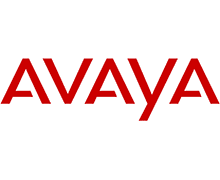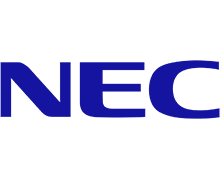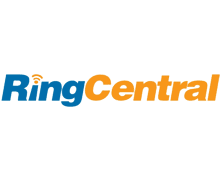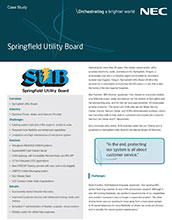UCaaS Managed for You
UCaaS offers organizations an all-in-one, cloud-based communications platform that includes meetings, video, chat, phone, file sharing, and other collaboration features.
But why managed? IT teams are lean and budgets are tight. That’s why we offer a full suite of managed services and workplace solutions delivered in a budget-friendly OPEX model. We create uniform experiences across multiple locations with consistency, speed, and agility through a robust design, deployment, and manage methodology — giving you one partner to guide you from where you are to where you want to be.
Create a digital workplace that employees will embrace and that also ensures successful business continuity.

Top Considerations for Business Continuity
See what you need to consider to maintain business continuity through Managed UCaaS.

The Digital Workplace
Today’s workforce is changing. There is an evolution (and revolution) happening in the workplace that is affecting how and where we communicate.

What’s the Difference?
Learn about the three UC&C options: on-premises, cloud-hosted, and hybrid and which one is best for your organization.
Managed Migration and Services
With more than 40 years experience in deploying in-building IT and communications technologies, a footprint that spans 120 countries, time-tested methodologies, certified technicians, and a proven track record, we have all the managed services needed
to make your move to UCaaS smooth and successful.

Professional
Services
- Consulting/Discovery
- Engineering/Architecture
- Assessments/Surveys
- Project Management

Field
Services
- On-Site Services
- Multisite Deployments
- Staging Services
- Logistics
- On-Site Staffing

Support
Services
- Remote Configuration
- Remote Support
- Service Desk
- Monitoring
- Sunset Services
- E-Waste

Service Level
Management
- Reporting
- Advanced Escalation
- Service Level Agreements
- Customer Success Manager
Black Box UCaaS Partners
Redefine your business UCaaS. Choose from seamless solutions that provide all-in-one voice, video, messaging, meetings, file sharing, and more. We’ll team up with you to find the right solution for your organization from one of our industry-leading
partners.
Click on a partner logo to discover additional resources and information.
Unified Communications & Collaboration
Successful enterprises know their competitive advantage lies in their workforce and today’s workforce is the most diverse ever with four generations working side by side, each with a preferred way of communicating from phone calls to video conferencing.
Related Topics
Read more about the technologies in UCaaS

Kari’s Law and Ray Baum’s Act Compliance Information
What is Kari's Law?
In December 2013, Kari Hunt was murdered in a Texas hotel room. During the attack, her nine-year-old daughter repeatedly attempted to call 9-1-1. Because the multiline telephone system (MLTS) in the hotel required a "9" to be dialed first to get an outside line, she wasn't able to connect with emergency services. Emergency responders later agreed that if they were contacted, Kari Hunt would most likely have survived the attack. This tragedy sparked a campaign, led by her family, to require direct-dial access to emergency 911 services from all devices.
Kari's Law requires phone systems to be configured in a way that allows people to call 911 without dialing any additional number, code, prefix or post-fix, regardless of location or device. This means that instead of dialing an 9 first for outbound calls, an employee or guest at your business must be able to pick up a phone, dial 9-1-1 and be connected. The goal is to remove all roadblocks to critical emergency services so that people can get help as quickly as possible.
Congress unanimously passed the Kari's Law and on February 16, 2018, it was signed into law. Kari's Law takes effect February 16, 2020.
Direct Dial 9-1-1
Kari's Law requires MLTS platforms that are manufactured, imported, offered for first sale or leased, or installed after February 16, 2020 to enable direct 9-1-1 dialing. It applies to manufacturers, importers, sellers, lessors, and any business that installs, manages, or operates an MLTS. This includes fixed phones, softphones, and off-premise phones. Existing equipment would require software and system upgrades to comply, but the law does not require replacing hardware or adding phone lines.
"Willful and knowing" noncompliance with the law could lead to a fine of up to $10,000 and additional penalties of up to $500 per day.
Emergency Notification
Additionally, Kari's Law requires that all 9-1-1 calls placed from an MLTS send a notification to a central point of contact alerting them to the emergency, the callback number, and location. The central point of contact can be on-site, such as a front desk, security office, or administrative office. It can also be an off-site designated facility or service. The notification can be a phone call, text, audible alarm, monitor alert, or an email. The purpose of this is twofold. The point of contact can facilitate building entry by first responders as well as administer first aid if so trained.
Accurate Dispatchable Locations
Ray Baum's Act works in conjunction with Kari's Law. It mandates that all 9-1-1 calls convey a dispatchable location and callback number. A dispatchable location is defined as the street address, building, suite, apartment, floor, room, or zone. It should be as specific as specifying where a particular conference room or classroom is located.
Ray Baum's Act was passed into law on March 23, 2018. The FCC's new rules were published in the December 6, 2019 Federal Register. The FCC recognizes three types of for phones.
Fixed phones or hard phones are static in an environment. These must comply with Ray Baum's Act by January 6, 2021.
Non-fixed or softphones are portable within an environment. These can also include phones used by remote workers. They must be compliant by January 6, 2022.
Who is Affected by Kari's Law and Ray Baum's Act?
Any company or organization, regardless of size, that uses a multiline telephone system is affected. This can include organizations with offices in multiple locations, educational facilities on campuses, hospitals, hotels, retail facilities, financial institutions, and more.
How Can You Become Compliant?
Some newer unified communications and collaboration systems can be quickly and easily programmed by one of our technicians to become compliant with Kari's Law. However, many legacy solutions cannot. Black Box can help you determine what your best options are and what are the next steps to ensure your organization is compliant with Kari's Law and Ray Baum's act. You can contact us and one of our technical advisors will get back to you.
For more information about 911 compliance regulations and the history of 911/E911, see these blogs: E-9-1-1 Compliance: A Hard Deadline for Softphones.and 911: From Where's the Fire to Wherever You Are.
If you would like to receive our quarterly newsletter, View from the Edge, you can sign up here.
Where Do We Start?
Work quickly to identify needs and outline a plan of action. Contact a Black Box expert today.






